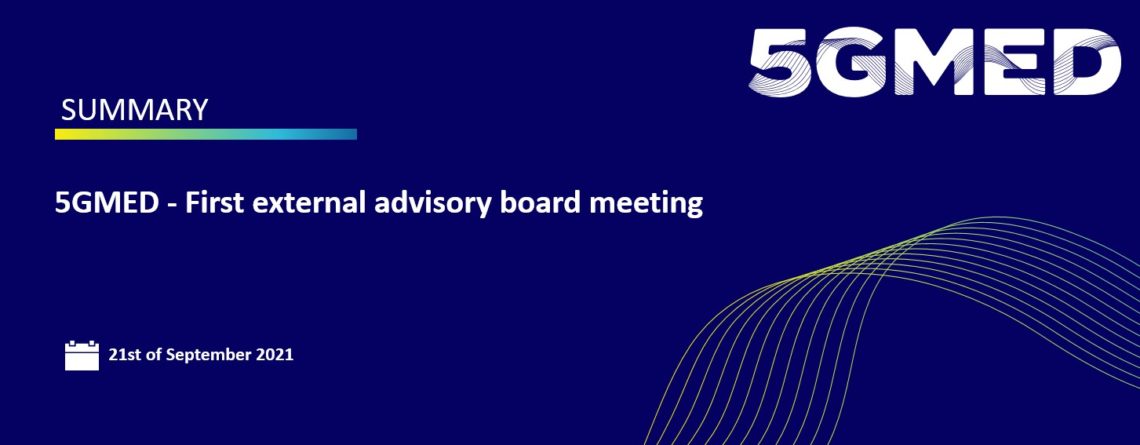5GMED – First external advisory board meeting
On the past 21st of September 2021, the 5GMED project organised its first advisory Board meeting composed of railway and road stakeholders: Jose Almodovar (TNO) 3GPP SA1 Chairman; Ali Hamidian (Huawei), Manager of Research and Standardization team contributing to 3GPP (SA2 and SA5), 5GAA, and 5G-ACIA; Nicolas Chuberre (Thales Alenia Space) ETSI/TCSES/SCN WG Chairman; Albert Tortajada I Flores (FGC), infrastructure director of FGC, Antonio Berrios (Adif), strategic innovation deputy director; Marco Mayoral (RENFE), new infrastructure projects; Laurent Bessou, Director Innovation Technologique, Vinci Autoroutes and Maxime Flament, 5GAA CTO.
After a short presentation by all the external advisory board members, Raul Gonzalez Prats, (Cellnex) coordinator of 5GMED started to expose the essential points that illustrate the project’s complexity, such as the network deployment, the different deployment areas, and the project phases. The main vision was also explained as being the unlocking roadways/railways synergies to accelerate cross-border large-scale 5G deployments.
The project’s opportunities have also been addressed. The project has identified that about 35% of roads and railways are less than one kilometre away. The coexistence of the CCAM and FRCMS infrastructure and a joint approach is undoubtedly full of possibilities such as the creation of new markets but also the engagement of key European industrial partners. For instance, a few barriers have to point out the power access: more than 85% of the roads has limited (if any) energy access. From the resistances’ perspective, the project has to answer some essential questions:
- How to address the significantly higher radiodensity required by 5G? in rural and underpopulated areas?
- How many trains per hour are on any 5G-enabled track?
- Would that level of use justify such investment? Etc.
The reflections related to those questions have been displayed on the followed slides:

The coordinator explained that the 5GMED project will participate in the acceleration of the 5G deployment by enabling technically the cooperation between roads and railways thanks to the multi-disciplinary consortium members.
During the first year of the project, 5GMED has designed a flexible and heterogeneous infrastructure by meeting the diverse requirements of the users, improved service continuity with multi-connectivity TCU supporting different radio technologies while maintaining V2X and C-V2X, thus keeping future CCAM needs. It has also developed the technologies applied to railways to provide Future Railway services inside the train. A complete multi-connectivity architecture has been designed for the train to connect with the network functions environment and increase comfort and safety. Mapping the complex ecosystem of different stakeholders’ business models, which must be mutually compatible and interoperable, has also been a challenge. Concerning the dissemination of the project, it has been focused on following the impact maximisation plan and establishing a strong brand throughout the creation of different communication material. The different use cases have also been represented through animated infographics extracted from the first video. The following steps will orient the communication to a more global vision of the project centred on the synergy between the road and railway.
5GMED: The future of mobility in the Mediterranean cross-border corridor
During the meeting, the different members of the advisory board were raising questions about technical aspects of the project that were answered by the responsible for the work packages. The encounter has been an opportunity for the project members to receive feedback and comments on the work that have been deployed during the past year. All the applications made by the Advisory board will be taken into consideration to ensure the success of the project in the next couple of years


